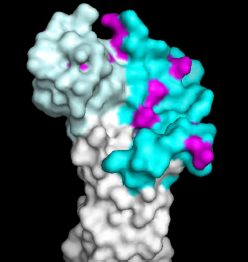Cases
Antigen Structure Analysis and Preparation and Expression (AI Structure Prediction)
Background:
With the development and maturity of antibody library construction technology, the high-size and high-diversity antibody library constructed by ABLINK is no longer a limiting factor in screening lead antibody molecules. However, the structure analysis of antigens has become the main limiting factor, affecting the construction of immune antibody libraries and the screening of high-affinity antibodies. Therefore, ABLINK provides AI-assisted antigen structure prediction and analysis services, as well as two sets of antigen protein expression systems in prokaryotic and mammalian cells to meet customers' different needs; at the same time, customers are only required to provide DNA or amino acid sequences, reducing their burden.
Process:
Antigen Structure Analysis - Taking Claudin 18.2 as an Example:
Target Claudin 18.2 is a protein with four transmembrane domains and two large extracellular regions. It has few amino acid differences with protein Claudin 18.1, which makes nanobody screening difficult. At the same time, in the structure analysis of 18.2, no known structure was found by searching for public structure information, so multiple known structures of the same family were selected to establish a homologous model for analysis. The reliability of the homologous model was evaluated: primary sequence homology > 50%, and the secondary structure skeleton of the three independent models is similar. Then, using the model with the highest homology, potential antigenic epitopes were analyzed: the cyan and grayish green areas in the figure below represent extracellular regions 1 and 2, respectively, each with independent sequence labeling parts and together forming a spatial epitope; the purplish red indicates the amino acid site differences between humans and camels, mainly distributed in extracellular region 1. Therefore, from the perspective of camel immunization, the optimal immunization strategy is to retain the transmembrane framework (white) and the entire extracellular region of the protein / overexpressed cell lines, and the secondary option is to mainly retain extracellular region 1.

